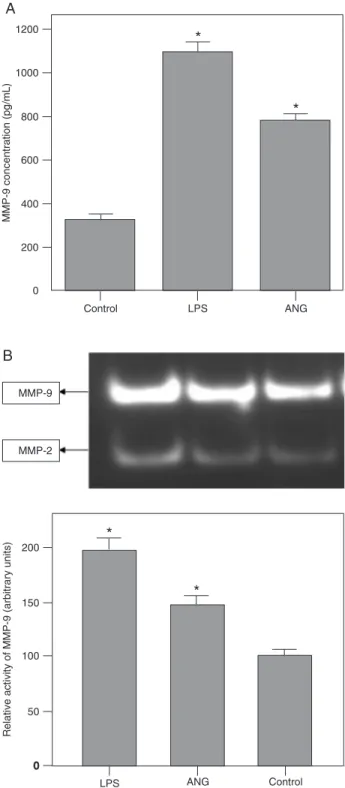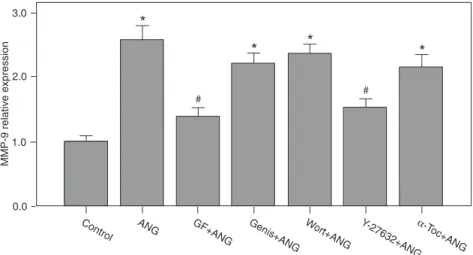Angiotensin II induces NF-κB, JNK and p38 MAPK activation in monocytic cells and increases matrix metalloproteinase-9 expression in a PKC- and Rho kinase-dependent manner
Texto
Imagem


Documentos relacionados
Phosphoinositide-3-kinase catalytic alpha and KRAS mutations are important predictors of resistance to therapy with epidermal growth factor receptor tyrosine kinase inhibitors
Angiotensin II stimulates tyrosine phosphorylation of the focal adhesion protein paxillin in aortic smooth muscle cells. Role of focal adhesion kinase in
H 2 O 2 -induced MIF production was completely inhibited by tyrosine kinase inhibitors genistein and PP1, as well as by protein kinase C (PKC) inhibitor GF109203X, suggesting
Penetration of Trypanosoma cruzi into mammalian cells depends on the activation of the parasites protein tyrosine kinase and on the increase in cytosolic Ca 2+ concentration.
Physiological concentrations of cytokine in the picomolar range were sufficient for activating the protein kinase activity of PI3K leading to Ser585 phosphorylation and hemopoietic
We observed the following effects both, in vivo and in vitro: (1) repeated exposure to WIRS activates the 3-phosphoinositide-dependent protein kinase (PDK1)–serum
Here, we examined the effect of ghrelin as an anti-inflam- matory hormone on p38MAPK and c-Jun N-terminal kinase (JNK) activation as well as proNGF and reactive oxygen spe- cies
Inhibition of phosphorylation by inhibitor peptides The phosphorylatable amino acid (threonine) of five peptide substrates (R4, R22, R133, R134, and R135) was replaced with